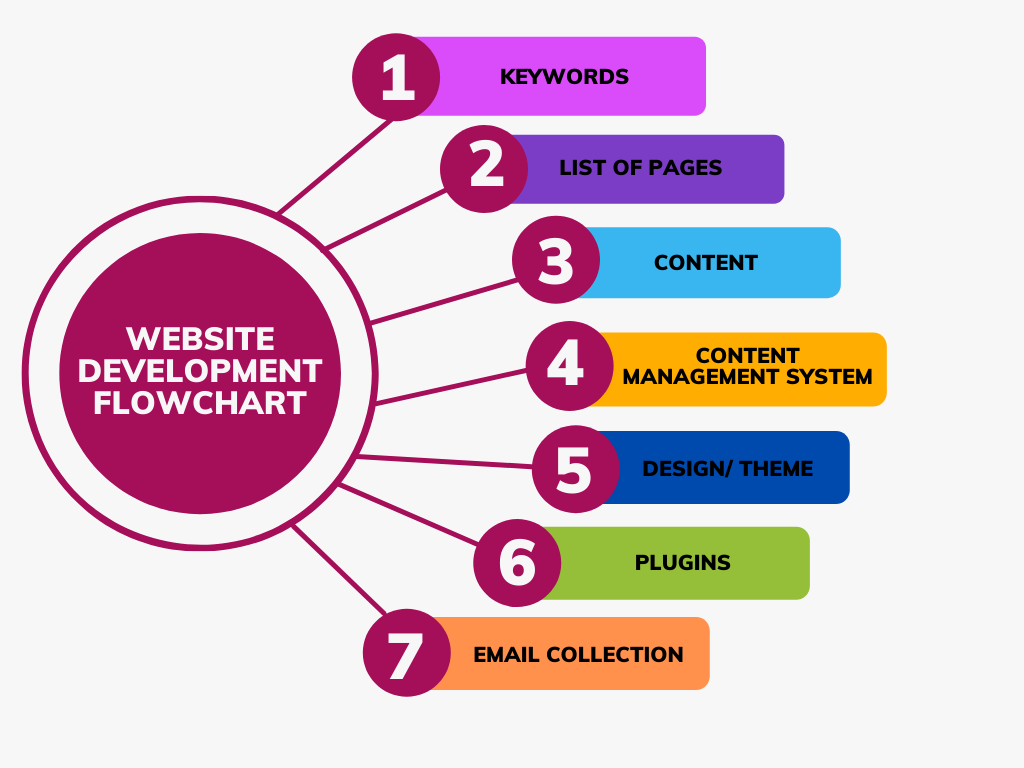Sure! Here’s a step by step website development process
Sure! Here’s a step by step website development process
- Define the Purpose and Goals: Clearly outline the purpose of your website and the goals you want to achieve. Understand your target audience and what you want them to do on your site (e.g., make a purchase, sign up for a newsletter, contact you).
- Plan and Research: Conduct market research and competitor analysis. Determine what features and functionalities your website needs to meet its objectives. Create a sitemap to visualize the structure of your website and plan the user flow.
- Choose a Domain and Hosting: Select a domain name that is relevant to your business and easy to remember. Choose a reliable web hosting provider that meets your website’s requirements for speed, storage, and bandwidth.
- Design and Wireframing: Design the visual layout of your website using wireframing tools. Consider the user interface (UI), user experience (UX), and ensure the design aligns with your brand identity.
- Content Creation: Create high-quality, SEO-friendly content for your website. This includes text, images, videos, and other media. Ensure the content is engaging, informative, and aligned with your target audience’s needs.
- Development: Start building your website using HTML, CSS, and other web technologies. If you’re not proficient in coding, you can use content management systems (CMS) like WordPress, Joomla, or Drupal to simplify the development process.
- Responsive Design: Ensure your website is responsive, meaning it adapts and functions well on various devices such as desktops, laptops, tablets, and smartphones.
- Testing: Conduct thorough testing of your website’s functionality, performance, and compatibility across different browsers and devices. Fix any bugs or issues that arise during testing.
- Search Engine Optimization (SEO): Optimize your website for search engines by implementing on-page SEO best practices, including keyword optimization, meta tags, and internal linking.
- Launch: Once your website is fully tested and ready, launch it on your chosen hosting platform. Make sure all the necessary website files and databases are uploaded correctly.
- Post-Launch Monitoring: Monitor your website’s performance using analytics tools like Google Analytics. Track visitor behavior, traffic sources, and other key metrics to measure the effectiveness of your website.
- Maintenance and Updates: Regularly update your website with fresh content, security patches, and software updates. Stay vigilant against security threats and keep your website secure.
- Marketing and Promotion: Promote your website through various channels, such as social media, email marketing, and online advertising. Consider implementing a content marketing strategy to attract and retain visitors.
- Feedback and Improvements: Collect feedback from users and customers to identify areas for improvement. Continuously iterate and make enhancements to your website based on user feedback and changing business needs.
- Regular Review: Periodically review and assess your website’s performance, content relevance, and conversion rates. Make data-driven decisions to optimize your website further.
Remember that the website development process is not a one-time task. It’s an ongoing effort to maintain and improve your online presence to meet the changing needs of your business and audience.

